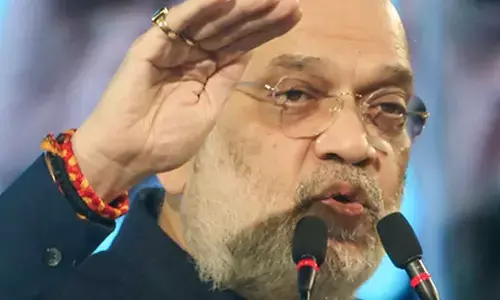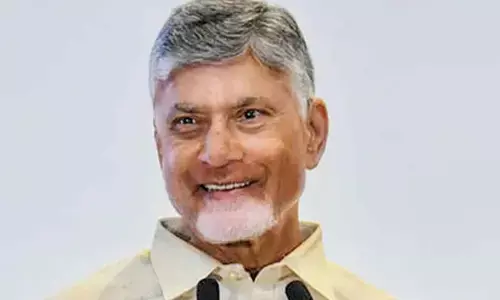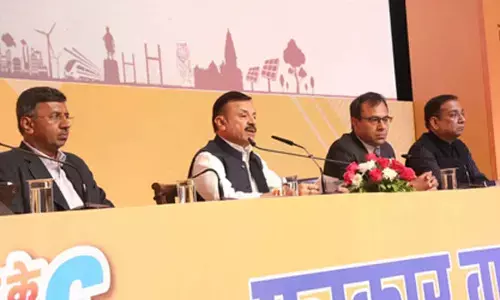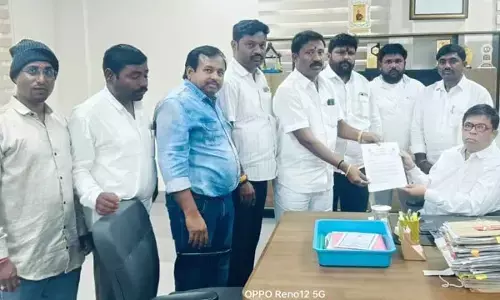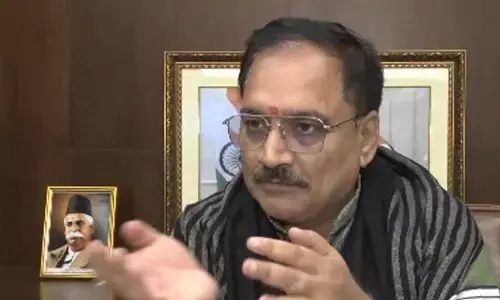Obscenity in art: Whose definition is it anyway?

In 1954, artist Akbar Padamsee was arrested from his debut solo show at Mumbai’s Jehangir Art Gallery for his paintings “Lovers I” and “Lovers II” that showed a man and woman in the nude.
New Delhi: In 1954, artist Akbar Padamsee was arrested from his debut solo show at Mumbai’s Jehangir Art Gallery for his paintings “Lovers I” and “Lovers II” that showed a man and woman in the nude. Twenty-five years later in 1979, a handwritten manuscript and 62 drawings by F N Souza, Padamsee’s contemporary, sent via airmail from the US to a publisher in India were seized by the Delhi customs department on charges of “obscenity”. The paintings and the airmail containing Souza’s drawings were subsequently released.
Cut to present. And things haven’t changed very much. History has revisited the late modernist painters, amongst India’s best known and most successful artists, rekindling that age old debate -- Can art really be obscene? And if so, what makes it unfit for Indian moral standards?
“Every nude painting or every painting depicting some sexual intercourse poses cannot be styled as obscene,” the Bombay High Court said last week Friday. The court ordered the Customs department to release works by Souza, co-founder of the Progressive Artists’ Group (PAG), and Padamsee that were seized in 2023 on the ground that they were “obscene material”.
“There can be bad art, there can be atrocious art, there can be insufferable art. But there cannot be obscene art because all these 20th century art had created the world over a transgressive spirit which questions all borders, including borders of morality and obscenity,” Ashok Vajpeyi, poet and art critic, told PTI.
According to several artists, curators and gallerists, seeing obscenity in art stems largely from the baggage of a colonial past and cultural illiteracy. Arguing that the human body has always been celebrated in India, Ashish Anand, CEO and managing director of DAG, called for sensitisation towards art among people.
“Since when did the body become obscene? We, in India, have always celebrated it. Look at Ajanta, or Khajuraho, Konark, our miniature tradition of paintings, even our poetry and literature is a celebration of life in the fullest sense,” he said. “We can get angry or be offended by the recent customs incident but it can be used positively to draw public attention to this sense of lack of understanding of values because of lack of sensitisation,” Anand added.
In April last year, the Mumbai Customs, citing obscenity, seized a consignment of seven artworks -- a folio of four erotic drawings comprising one called “Lovers” by Souza as well as a drawing titled “Nude” and two photographs by Padamsee. The seven works had been acquired in 2022 by businessman and art collector Mustafa Karachiwala, through his company BK Polimex Pvt Ltd, at two separate auctions held in London. It was in response to Karachiwala’s petition that the Bombay High Court made its stern observations and quashed Mumbai Customs order confiscating the artwork as suffering from “perversity and unreasonableness”.
Echoing Anand, Vajpeyi added that the fact that India has temples like Khajuraho, Konark and literature like Kamasutra proves the notion that “sacred and sensuous” as separate is not part of the Indian tradition. “We have sculpted nudity, lovemaking, and furious lovemaking openly. And they are part of the temple architecture. So the notion that the sacred and the sensuous, physical and the metaphysical are separate is not a notion that the Indian tradition had,” Vajpeyi said.
Photographer and art critic Ram Rahman agreed, saying “depiction of sexuality in art is not obscene”. “...it’s a reality of life and it exists in art all over the world. Whether it is Japanese prints or European paintings. Look at our own traditional eroticism which is in temples. And eroticism was celebrated because it’s a part of natural life,” Rahman said.
One the most popular cases of social ostracism on accusations of obscene art remains M F Husain, who had to leave the country in 2006 and died in exile in 2011. Husain received threats after being accused of hurting religious sentiments for portraying Hindu gods and goddesses in the nude. He spent his last years in Doha and London. Vajpeyi, who is also the managing trustee of the Raza Foundation, founded by another PAG member S H Raza, put the blame of seeing obscenity in art on centuries of colonial rule.
“It is the 19th century western-propelled modernity which took place in the Victorian era and therefore brought the baggage of the Victorian values that started obsessing us, especially the middle class,” he said. He added that the middle class is “deeply entrenched in cultural illiteracy” and knows very little about Indian traditions.
Uday Jain, director of Dhoomimal Gallery, noted that the British made India “conscious and hesitant” of being “the most progressive and forward-looking societies”. “This was one of the most important issues raised by the progressive artists group, and they wanted to advocate an independent style of expression and painting. A society that encourages freedom of expression is also much safer as opposed to a society that curbs expression, making it repressive,” Jain said.
Souza and Padamsee were among India’s leading modernists artists along with the likes of Husain, S H Raza, K H Ara, H A Gade, S K Bakre and Ram Kumar. Earlier this year, at the Christie’s Asian Art Week sale in New York, Souza’s “The Lovers”, painted in 1960, sold for USD 4.8 million, breaking all previous records for the artist. Padamsee’s “Reclining Nude” was sold for USD 1.4 million at a Sotheby’s auction in New York in 2010, and “Greek Landscape” at USD 2.9 million at a Saffronart auction in 2016.
When Souza’s mail from the US was seized for containing obscene material in March 1979, the matter reached the Rajya Sabha and Shrikant Verma, author and MP, made a forceful address. “It is a disgrace for the entire government that the customs of this government are so backward that they have taken upon themselves the task of the censor, that they have become the custodians of public morality, that they can ban a book in this manner,” Verma is quoted as saying by publisher Ashok Chopra in “A Scrapbook of Memories”.
Even though Souza’s mail was readily released by the Delhi Customs, just as the Bombay High Court has ordered the Mumbai Customs to do with Karachiwala’s consignment, the years 1954, 1979, 2006 and 2024 are witness to times when Indian art had to face accusations of being obscene. As the adage goes, the more things change… (PTI)









